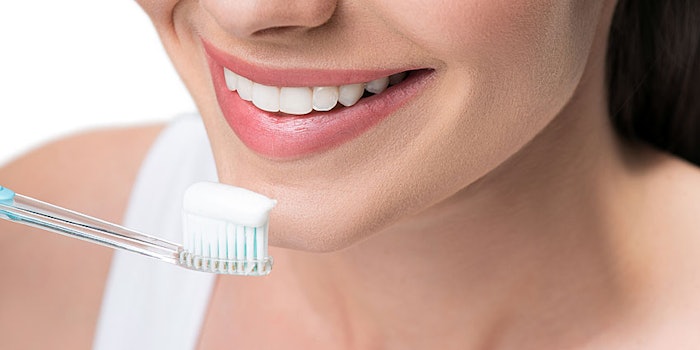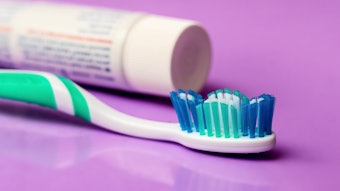
Composition of Toothpastes
A typical toothpaste contains a range of ingredients shown in Table 1. The abrasive, such as calcium carbonate or hydrated silica, is responsible for removing the debris and discoloration from the teeth. Detergent surfactants, such as sodium lauryl sulfate, lower the surface tension and therefore help loosen plaque deposits and emulsify or suspend the debris removed from the tooth surface during cleaning. Surfactants also contribute to the foaming property of toothpastes.
Humectants are used to prevent loss of water and subsequent hardening of toothpastes when exposed to air. The most commonly used humectants are glycerin and D-sorbitol.
Binders in toothpastes are hydrophilic colloids that disperse or swell in the presence of water. They are used to stabilize toothpaste formulations by preventing the separation of the solid and liquid phases. Examples of binding agents used in toothpaste include natural gums (e.g., karaya), seaweed colloids (e.g., alginates, carrageenan), and synthetic methyl cellulose derivatives.
Most toothpastes today contain 0.1% fluoride, usually in the form of sodium monofluorophosphate (MFP), which is beneficial in the prevention of dental caries. Triclosan is another therapeutic agent that has been clinically proven to fight gingivitis by inhibiting the growth of plaque-causing bacteria.1,2
Toothpastes are usually sweetened and flavored to provide palatability and, hence, consumer acceptance. Sweeteners may consist of a combination of sugar alcohols, or polyols, and a high-intensity sweetener such as saccharin. The flavor is usually a blend of several components.
The principal flavors used are peppermint, spearmint and wintergreen modified with
essential oils of anise, clove, caraway, pimento, eucalyptus, citrus, menthol, nutmeg, thyme or cinnamon.
Coloring agents are also added to toothpastes. These include titanium dioxide for white pastes and various food dyes for colored pastes. Finally, preservatives such as sodium benzoate are included.











